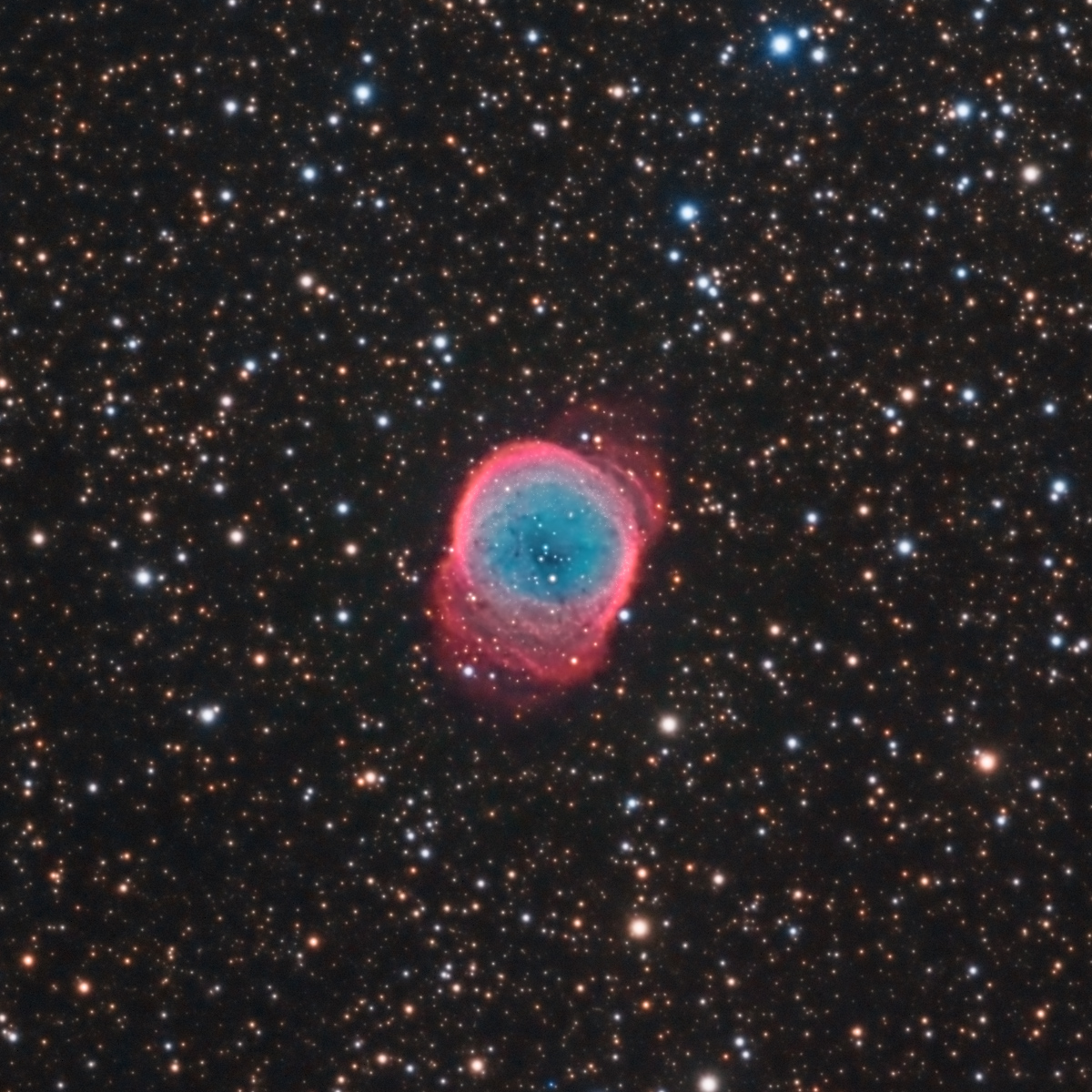Technical Information:
(HaL)(HaR)(OIIIG)(OIIIB): 720:690:510:210:180:240 (42.5 hours of exposures; L, R and G individual images were all 15-minute exposures; B images were 20 minutes each, and Ha and
OIII were 30-minute individual exposures). All images were unbinned. The luminance layer is a blend of the L-filtered images and the Ha-filtered images; the red channel is a blend of the R-filtered
images and Ha-filtered images; the green channel is a blend of the OIII images and G images, and the blue channel is a blend of the OIII images and B images.
Equipment: RC Optical Systems 14.5 inch Ritchey-Chrétien carbon fiber truss telescope, with ion-milled optics and RCOS field flattener, at about f/9, and an
SBIG STX-16803 monochrome camera with internal filter wheel (SBIG filter set), guided by an SBIG AO-X, all riding on a Bisque Paramount ME German Equatorial Mount.
Image Acquisition/Camera Control: Maxim DL, controlled with ACP Expert/Scheduler, working in concert with TheSky X Professional Edition.
Processing: All images calibrated (darks, bias and sky flats), aligned, combined and cropped in Pixinsight. Gradient removal, NoiseXTerminator and BlurXTerminato done in
Pixinsight. RGB Color combine in Pixinsight. Ha and OIII data blended into the broad band data in Pixinsight. LRGB combination and some further finish work was done in Photoshop CC.
Location: Data acquired remotely with my equipment hosted by Sierra Remote Observatories, Auberry, California, USA.
Date: Images taken on many nights in September and October, 2021. Image posted November 1, 2021.
Date: Image scale of full-resolution image: 0.56 arcseconds per pixel.
Seeing: Generally very good, with individual calibrated luminance frames varying from 1.7 to 2.4 arcsecond FWHM.
CCD Chip temperature: -25C

